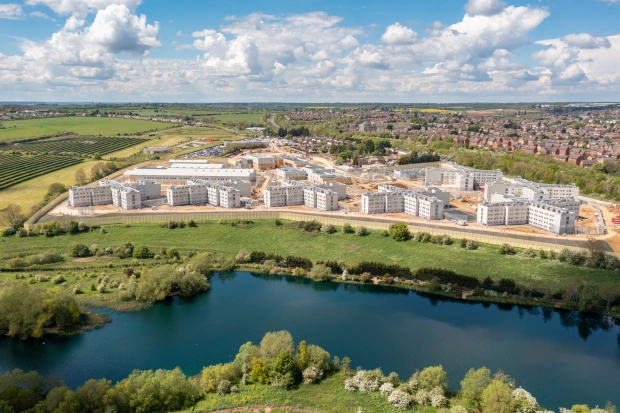IT MAY look like a budget hotel at a glance but these snaps actually show a glimpse inside the UK’s first ever privately-run super prison.
With bar-free windows and river views, the first inmate will arrive at £253million at the mega-jail in Wellingborough, Northamptonshire next January after months of construction.
New photos show a light and airy double room and single room at Her Majesty’s Prison Five Wells, with brightly coloured walls and unobstructed views over the beautiful River Nene and a fishing lake.
It will hold up to 1,680 inmates – making it England’s biggest jail – and has just been structurally finished, with works due to be completed by October.
HMP Five Wells tweeted: “Been a busy day on site today but took the opportunity to grab a couple of pics for you.
One of a double room, there are 84 in total, and one of the single rooms with the FANTASTIC barless window …albeit not the best view at present #bestprisonever.”
The category C jail is seen as a flagship example of the Government’s aim to create a “modern, efficient prison estate that is fit for the future” and will have a clear focus on rehabilitating offenders.
It has been built on the site of the former HMP Wellingborough site, which closed in 2012, and held a maximum of 650 adult male inmates.
The prison build has been handled by Kier group, using pre-cast components containing recycled materials and the roof is covered with solar panels.
New aerial photos also show the landscaped grounds, which include a horticultural area and four football pitches, where prisoners can exercise.
The jail designers have ditched the usual K-shaped formation of prison housing blocks and instead used seven staggered cross-shaped buildings.
The K-block style has been favoured since Victorian times, with the idea that a single prison officer could be placed in the centre of the radial arms of corridors and survey all the cells quickly.
The new cross-shaped buildings mean the corridors are broken up into smaller zones, rather than miles of long corridors, which will enable prison staff to have more direct contact with prisoners.



















